India customers to view on amazon.in
“Please note that no animals were harmed in the making of this content.”
Daily Dog Walks: How Long Is Long Enough?
Understanding the ideal duration for daily dog walks is crucial for maintaining your dog’s physical and mental health. The length of these walks can significantly impact their overall well-being.
- The Importance of Regular Exercise for Dogs
- Factors That Determine Ideal Walking Duration
- Daily Dog Walks: How Long Is Long Enough?
- Walking Guidelines by Breed Type
- Special Considerations for Puppies and Senior Dogs
- Creating an Effective Walking Routine
- Seasonal Considerations for Dog Walking
- Quality vs. Quantity: Making the Most of Walk Time
- Solutions for Busy Dog Owners
- Conclusion
- FAQ
- How long should I walk my dog daily?
- Can I walk my dog too much?
- How often should I walk my dog?
- What are the signs that my dog needs more exercise?
- How do I create a walking routine for my dog?
- Are there any breed-specific walking guidelines?
- How long should I walk my puppy?
- What are some tips for walking my dog in extreme weather?
- Can I incorporate training into our walks?
- What are some alternatives to walking if I’m short on time?
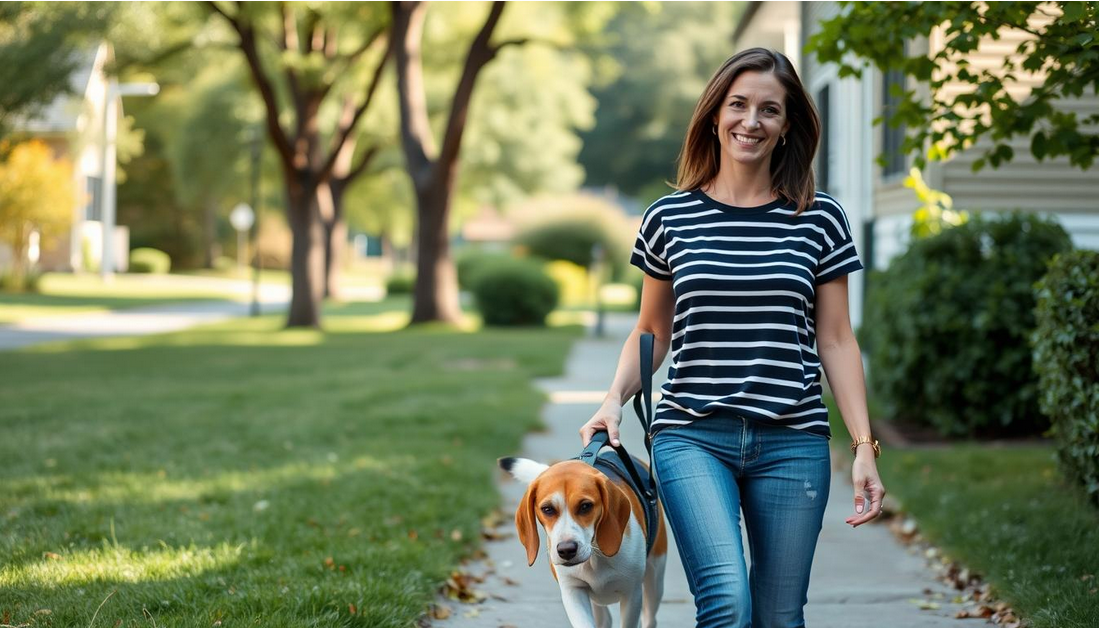
Factors such as breed, age, health, and energy level play a significant role in determining the optimal length of dog walks. For instance, high-energy breeds require longer and more frequent walks compared to lower-energy breeds.
Creating an effective walking routine for dogs involves considering these factors and tailoring the duration and frequency of walks accordingly.
Key Takeaways
- Consider your dog’s breed, age, health, and energy level when determining walk duration.
- High-energy breeds require longer and more frequent walks.
- Older dogs or those with health issues may need shorter, more gentle walks.
- Puppies require regular, short walks to prevent overexertion.
- Adjust the walking routine based on your dog’s individual needs and responses.
The Importance of Regular Exercise for Dogs
Exercise plays a vital role in the physical and mental well-being of dogs. Regular physical activity is essential for maintaining their overall health, preventing various health issues, and ensuring they lead happy lives.
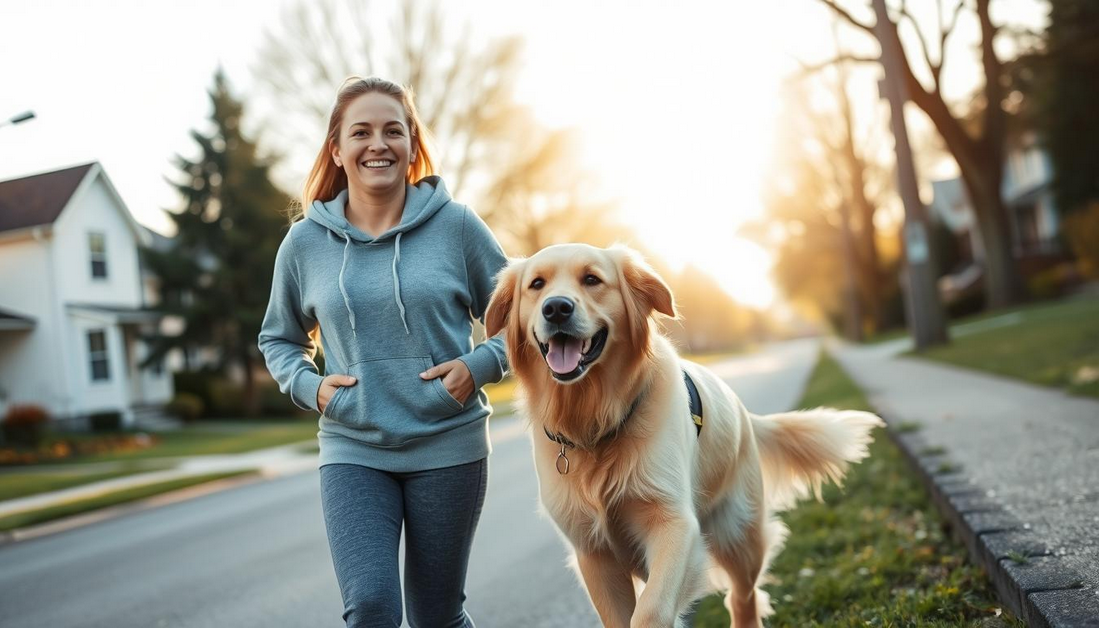
Physical Health Benefits
Regular exercise provides numerous physical health benefits for dogs. It helps in maintaining a healthy weight, improving cardiovascular health, and strengthening muscles. Daily walks can significantly reduce the risk of obesity, diabetes, and heart diseases in dogs.
- Maintains a healthy weight
- Improves cardiovascular health
- Strengthens muscles
- Enhances flexibility and balance
Mental Stimulation and Behavioral Benefits
Exercise is not just beneficial for a dog’s physical health; it also provides mental stimulation and has several behavioral benefits. Regular walks and playtime can reduce stress and anxiety in dogs, preventing behavioral issues such as destructive behavior or excessive barking.
As noted by dog trainers, “Exercise is a critical component of a dog’s daily routine, helping to channel their energy positively and reduce the likelihood of behavioral problems.”
“A tired dog is a happy dog.” Regular exercise helps in burning off excess energy, making them more relaxed and content.
Some of the key mental and behavioral benefits include:
- Reduces stress and anxiety
- Prevents behavioral issues
- Enhances mental stimulation
- Promotes a sense of well-being
Factors That Determine Ideal Walking Duration
Multiple factors come into play when deciding the ideal walking duration for your canine companion. Understanding these factors is crucial for tailoring a walking routine that meets your dog’s specific needs.
Breed and Size Considerations
Different breeds have varying exercise needs. For instance, high-energy breeds like Border Collies and Huskies require more extensive and frequent walks compared to low-energy breeds such as Bulldogs and Basset Hounds. Similarly, larger breeds generally need more exercise than smaller breeds.
Breed-specific exercise needs:
- High-energy breeds: 60-90 minutes of exercise per day
- Medium-energy breeds: 30-60 minutes of exercise per day
- Low-energy breeds: 15-30 minutes of exercise per day
| Breed Size | Typical Exercise Needs |
|---|---|
| Small Breeds | 15-30 minutes/day |
| Medium Breeds | 30-60 minutes/day |
| Large Breeds | 60-90 minutes/day |
Age and Health Status
A dog’s age and health status significantly impact their exercise needs. Puppies, adult dogs, and senior dogs have different requirements. Puppies need gentle, controlled exercise to prevent damage to their developing joints, while senior dogs may require shorter, more gentle walks due to potential health issues.
Age-related exercise considerations:
- Puppies: Short, gentle walks (5-10 minutes) multiple times a day
- Adult dogs: Walks tailored to breed and energy level
- Senior dogs: Shorter, more gentle walks (10-30 minutes)

Energy Level and Temperament
A dog’s energy level and temperament also play a significant role in determining their ideal walking duration. Dogs with high energy levels require more exercise to keep them physically and mentally stimulated, while dogs with lower energy levels may be satisfied with shorter walks.
Energy level considerations:
- High-energy dogs: Longer, more frequent walks
- Low-energy dogs: Shorter, less frequent walks
By considering these factors, you can create a walking routine that is tailored to your dog’s unique needs, ensuring they receive the right amount of exercise for optimal health and happiness.
Daily Dog Walks: How Long Is Long Enough?
Dog owners often wonder how long they should walk their dogs each day. The ideal duration of daily dog walks varies significantly depending on several factors, including breed, age, health, and energy level. Understanding these factors is crucial to providing your dog with the right amount of exercise.
Minimum Exercise Requirements
The minimum exercise requirements for dogs can vary widely. Generally, dogs need at least 30 minutes of exercise per day, but this can range from as little as 15 minutes for some small breeds to several hours for high-energy breeds. It’s essential to research the specific needs of your dog’s breed to ensure you’re providing adequate exercise.
For example, a study found that dogs who received regular exercise had better mental health and behavioral outcomes. As Dr. Karen Becker notes, “Exercise is not just about physical health; it’s also crucial for mental well-being.”

Signs Your Dog Needs More Exercise
If your dog is exhibiting certain behaviors, it may be a sign that they need more exercise. These signs can include:
- Restlessness or destructive behavior
- Weight gain or obesity
- Escape attempts or attempts to dig or chew
Recognizing these signs early can help prevent behavioral problems and ensure your dog stays healthy.
Signs of Over-Exercise
While exercise is essential, over-exercising can be detrimental to your dog’s health. Signs of over-exercise include:
- Excessive fatigue or lethargy
- Limping or showing signs of pain
- Panting or difficulty breathing
As
“The key to a healthy dog is balance. Too little exercise can lead to obesity, while too much can cause injury.”
This quote highlights the importance of finding the right balance for your dog’s exercise needs.
Walking Guidelines by Breed Type
Different dog breeds have distinct exercise requirements, making it crucial to tailor your walking routine accordingly. The exercise needs of dogs can vary significantly based on their breed, size, energy level, and original purpose. Understanding these needs is key to creating a walking routine that keeps your dog healthy and happy.
High-Energy Breeds
High-energy breeds, such as Border Collies and Huskies, require extensive exercise to maintain their physical and mental health. These dogs were often bred for jobs that demand a lot of energy, such as herding or sled pulling.
- Need more than an hour of physical activity daily
- Benefit from high-intensity exercises like running or agility training
- Require mental stimulation through activities like obedience training or puzzle toys
As noted by dog training expert, “High-energy breeds need activities that challenge them both physically and mentally to prevent boredom and destructive behavior.”
“A tired dog is a happy dog, especially when it comes to high-energy breeds.”
Medium-Energy Breeds
Medium-energy breeds, including Retrievers and Spaniels, need regular exercise but can thrive with less intense and shorter walks compared to high-energy breeds. They require a balance of physical activity and rest.
| Breed | Recommended Daily Exercise |
|---|---|
| Retrievers | 30-60 minutes |
| Spaniels | 30-45 minutes |
Low-Energy Breeds
Low-energy breeds, such as Bulldogs and Basset Hounds, require minimal exercise due to their laid-back nature and potential health issues. Short, gentle walks are recommended.

For low-energy breeds, it’s essential to avoid over-exercising, which can lead to health complications. A daily walk of 15-30 minutes is typically sufficient.
Special Considerations for Puppies and Senior Dogs
Tailoring walks to the age and health status of puppies and senior dogs is essential for their development and comfort. As dogs grow and age, their exercise needs change significantly, requiring owners to adapt their walking routines accordingly.
Age-Appropriate Exercise for Puppies
Puppies require exercise that supports their growth without causing undue stress on their developing joints. Age-appropriate exercise is crucial for puppies to ensure they develop properly and maintain a healthy weight.
Exercise for puppies should be fun and engaging, incorporating playtime that stimulates their physical and mental health. Activities such as short walks, playtime in securely fenced areas, and gentle training exercises are ideal.
The 5-Minute Rule for Puppies
A commonly recommended guideline for puppy exercise is the 5-minute rule, which suggests that puppies should have 5 minutes of exercise per month of age, up to twice a day. For example, a 3-month-old puppy should have up to 15 minutes of exercise, twice a day.
| Puppy’s Age (Months) | Recommended Exercise Duration (Minutes) | Frequency |
|---|---|---|
| 3 | 15 | Twice a day |
| 4 | 20 | Twice a day |
| 5 | 25 | Twice a day |
Adjusting Walks for Senior Dogs
Senior dogs, on the other hand, require walks that are adjusted based on their health status and mobility. Older dogs may have conditions such as arthritis or reduced vision, which necessitate gentler and shorter walks.
When walking senior dogs, it’s essential to consider their comfort and safety. This may involve choosing quieter routes, avoiding extreme temperatures, and being mindful of potential hazards.
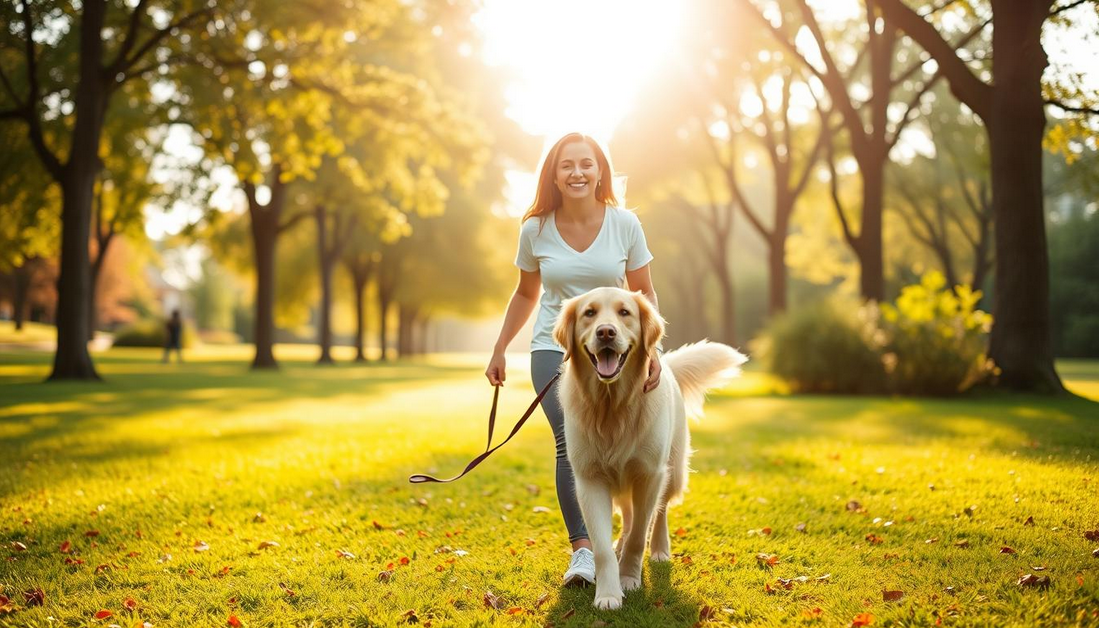
By understanding and catering to the unique needs of puppies and senior dogs, owners can ensure their pets lead happy and healthy lives.
Creating an Effective Walking Routine
A well-structured walking routine can significantly enhance your dog’s physical and mental health. By incorporating several key elements, you can create a walking schedule that benefits your dog and strengthens your bond.
Consistency and Scheduling
Consistency is crucial when it comes to dog walking. Dogs thrive on routine, and a consistent walking schedule helps reduce anxiety and stress. To establish a routine, decide on a schedule that works for you and your dog, and stick to it, even on weekends and holidays.
Tips for a consistent walking routine:
- Choose a specific time of day that suits your dog’s needs.
- Be consistent in the duration and frequency of walks.
- Adjust the schedule as needed based on your dog’s age, health, and energy level.
Varying Routes and Environments
Varying your walking routes and environments can keep the experience interesting and engaging for your dog. New sights, smells, and sounds provide mental stimulation, which is just as important as physical exercise.
Benefits of varying routes include:
- Reducing boredom and preventing habituation.
- Providing mental stimulation through new experiences.
- Enhancing your dog’s adaptability and confidence.
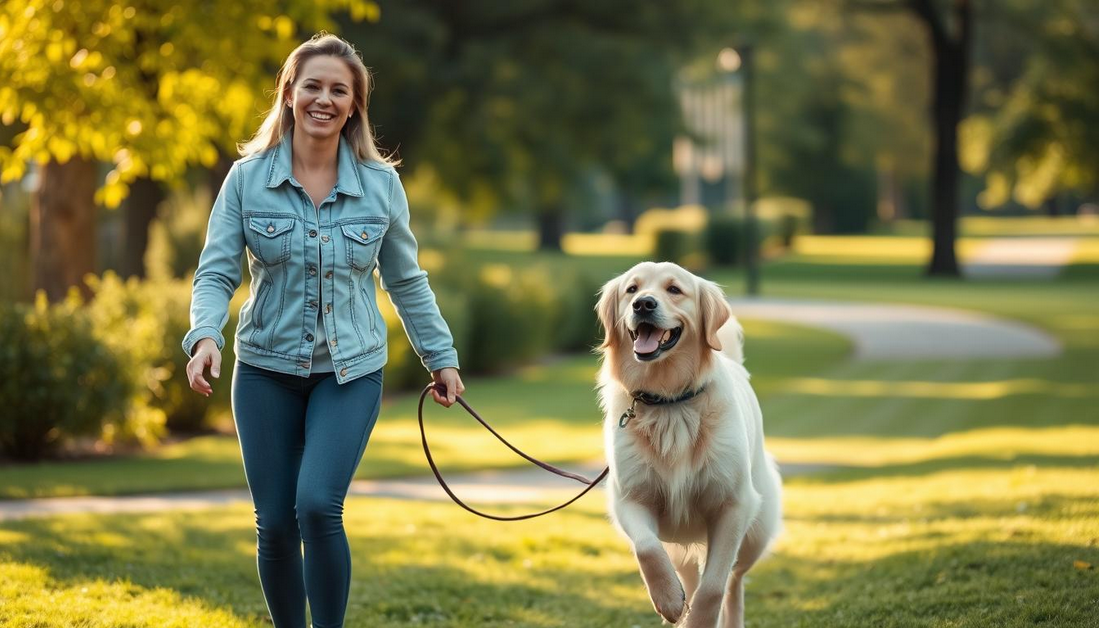
Leash Training and Walking Equipment
Proper leash training and the right walking equipment are essential for safe and enjoyable walks. Leash training helps prevent pulling and makes walks more pleasant for both you and your dog.
Leash training tips:
- Start with short training sessions to build good habits.
- Use positive reinforcement techniques, such as treats and praise.
- Choose comfortable, durable leashes and harnesses that suit your dog’s size and breed.
Seasonal Considerations for Dog Walking
As the seasons change, it’s crucial to adjust your dog walking routine to ensure your pet’s safety and comfort. Different weather conditions can significantly impact your dog’s health and enjoyment during walks.
Hot Weather Walking Safety
During hot weather, it’s essential to walk your dog during the cooler parts of the day, such as early morning or late evening, to avoid heatstroke. Always ensure your dog has access to plenty of fresh water before, during, and after walks.
Watch for signs of overheating, such as excessive panting, drooling, or lethargy. If you notice any of these symptoms, stop the walk immediately and provide shade and water.
| Hot Weather Precautions | Description |
|---|---|
| Timing | Walk during cooler parts of the day (early morning or late evening) |
| Hydration | Ensure access to plenty of fresh water |
| Monitoring | Watch for signs of overheating (excessive panting, drooling, lethargy) |
Cold Weather Walking Tips
In cold weather, protect your dog from extreme temperatures by adjusting the duration and frequency of walks. Consider using protective gear like dog coats or boots for added warmth.
Be cautious of ice and salt on roads, as they can be harmful to your dog’s paws. Clean your dog’s paws after walks to remove any salt or de-icing chemicals.

Rainy Day Alternatives
On rainy days, consider alternative indoor activities to keep your dog exercised and engaged. Play indoor fetch or hide-and-seek to provide mental stimulation and physical exercise.
You can also use puzzle toys filled with treats to challenge your dog and keep them occupied. This not only provides entertainment but also helps in reducing boredom and destructive behavior.
Quality vs. Quantity: Making the Most of Walk Time
When it comes to dog walks, the duration is just one aspect to consider; the quality of the time spent is equally crucial. While the length of a walk can impact its effectiveness, incorporating activities that stimulate your dog mentally and physically can make a significant difference.
Enrichment Activities During Walks
Enrichment activities during walks can turn a simple stroll into a engaging experience for your dog. Sniffing games are an excellent way to mentally stimulate your dog. Allowing your dog to sniff and explore their environment can be as tiring as physical exercise. You can create a simple sniffing game by hiding treats or toys along your walking route, encouraging your dog to use their nose to find them.
Another enrichment activity is changing your walking route or environment. Dogs appreciate novelty, and new sights, smells, and sounds can keep them engaged and interested. Varying your route can also help prevent boredom and make walks more enjoyable for both you and your dog.
| Activity | Benefits | Tips for Implementation |
|---|---|---|
| Sniffing Games | Mental Stimulation, Reduces Boredom | Hide treats or toys along your route, encourage your dog to sniff them out. |
| Route Variation | Increases Novelty, Prevents Habituation | Change your walking route regularly to introduce new environments. |
| Training Exercises | Improves Obedience, Strengthens Bond | Incorporate basic obedience commands during walks, reward good behavior. |
Training Opportunities on Walks
Walks are not just for exercise; they’re also excellent opportunities for training. Incorporating training exercises during walks can improve your dog’s obedience and strengthen your bond. Basic commands like “sit,” “stay,” “heel,” and “leave it” can be practiced during walks. Rewarding your dog with treats and praise for good behavior reinforces their learning and encourages positive behavior.
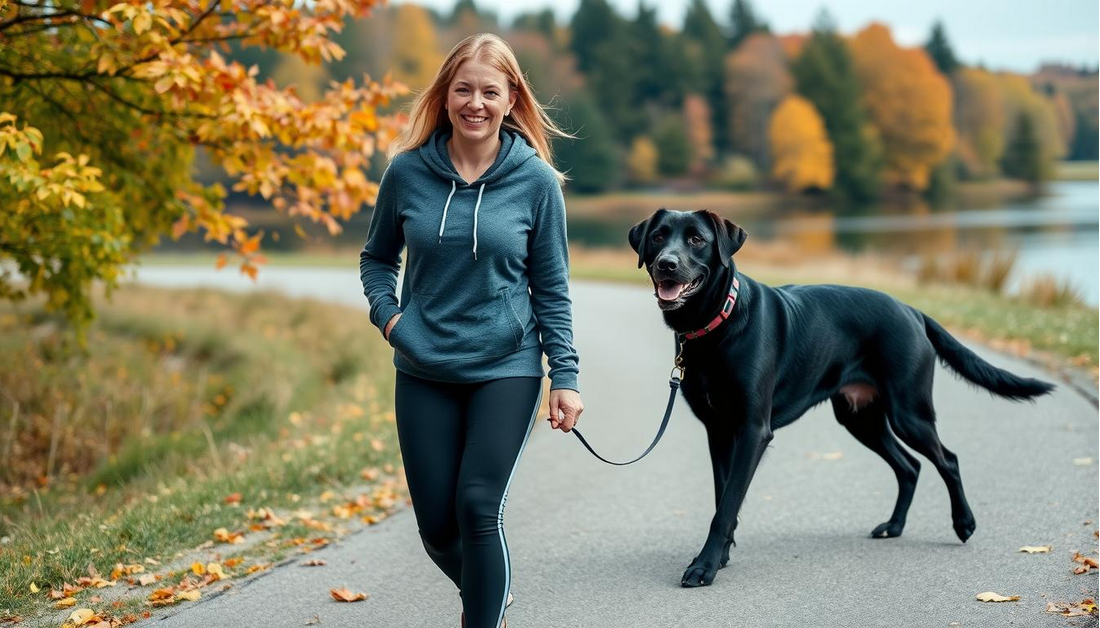
It’s also beneficial to practice loose-leash walking, which helps prevent pulling on the leash. By stopping or changing direction when your dog pulls, you can teach them that pulling doesn’t get them where they want to go faster. Consistency and patience are key to successful training during walks.
Solutions for Busy Dog Owners
For dog owners with hectic schedules, ensuring their pets get enough exercise can be challenging, yet there are several strategies to overcome this hurdle. Balancing work, family, and social commitments while providing dogs with the physical activity they need is crucial for their overall health and happiness.
One of the key challenges faced by busy dog owners is finding the time to take their dogs on long, leisurely walks. However, this doesn’t mean that dogs can’t get the exercise they need. By adopting a few simple strategies, owners can ensure their dogs remain active and engaged, even on the busiest of days.
Maximizing Limited Walking Time
For those with limited time, maximizing walking time is essential. This can be achieved by incorporating more intense activities into shorter walks, such as brisk walking, jogging, or even interval training. Adding variety to walks, like changing routes or incorporating playtime, can also make the most of the time available.
Additionally, owners can consider combining walks with other activities, such as walking to work or doing errands on foot with their dog. This approach not only saves time but also provides an opportunity for dogs to get the exercise they need while accompanying their owners on daily tasks.
Professional Dog Walking Services
When time is truly scarce, professional dog walking services can be a lifesaver. These services provide trained and reliable individuals to take dogs on walks, ensuring they get the exercise and attention they need. This option is particularly beneficial for owners with demanding work schedules or those who are away from home for extended periods.
By hiring a professional dog walker, owners can have peace of mind knowing their dogs are being cared for and exercised in their absence. It’s essential to research and select a reputable service that aligns with the dog’s needs and the owner’s preferences.
Supplemental Indoor Activities
On days when outdoor walks are not feasible, supplemental indoor activities can provide necessary mental and physical stimulation. Activities such as hide-and-seek, indoor fetch, and scent work are excellent ways to engage dogs and keep them active indoors.
- Hide-and-seek encourages dogs to use their sense of smell and problem-solving skills.
- Indoor fetch is a great way to get dogs running and burning energy indoors.
- Scent work involves teaching dogs to follow specific scents, providing mental stimulation.
By incorporating these indoor activities into their routine, dog owners can ensure their pets remain engaged and active, even on days when outdoor walks are not possible.
Conclusion
Determining the ideal duration for daily dog walks is crucial for a dog’s overall well-being. Factors such as breed, age, health, and energy level play a significant role in deciding the ideal dog walking time. By understanding these factors, you can create a tailored dog walking routine that suits your dog’s needs.
A well-planned dog walking routine not only addresses dog exercise needs but also strengthens the bond between you and your dog. Regular walks, adapted to your dog’s requirements, contribute significantly to their physical and mental health. Understanding how often to walk dogs is essential to prevent health issues and ensure they lead a happy life.
By incorporating enrichment activities during walks and being mindful of your dog’s needs, you can make the most of your walking time. This thoughtful approach to dog walking will have a positive impact on your dog’s overall quality of life.








